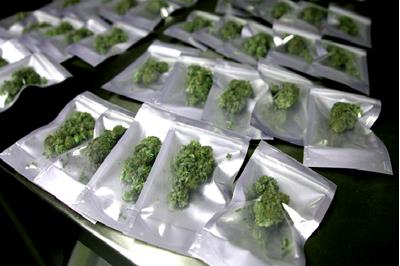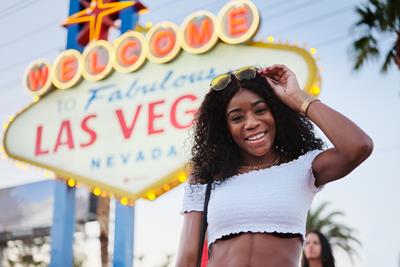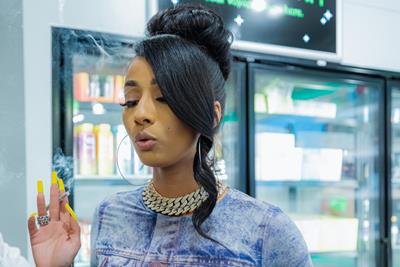
Sunday May 8, 2022
By Trevor Ross
 420 Culture
420 Culture
Sales of recreational cannabis have been around for about a decade now, largely thanks to the efforts of passionate enthusiasts who wanted to bring the experience of cannabis to more people. In the fledgling days of legalization, many dispensaries happily opened jar after jar for curious customers to see and smell the weed they were considering. That weed was then weighed and packaged in front of the customer “deli style,” then taken home in a bow.
But now, most cannabis is sold in pre-packaged jars or plastic sleeves, leaving many consumers dissatisfied by the impersonal and restrictive shopping experience, not to mention complicit in the waste of countless plastic containers. Those consumers may argue that pre-packaged weed is symptomatic of the factitious commodification of cannabis, but the real problem with pre-packaged weed is that it’s too perfect for dispensaries to justify selling anything else.
This article reviews the pros and cons of pre-packaged weed, why dispensaries sell it, and why it probably isn’t going anywhere.
Why Dispensaries Sell Pre-Packaged Cannabis
The old deli-style purchasing experience was undeniably more intimate and artisanal, but it carried a lot of logistical challenges for businesses trying to maximize trade. It also made it harder to meet or prove compliance with state regulations regarding childproofing and standardized labeling of cannabis packaging.
States offering cannabis sales are legally required to track the product being sold from “seed to sale.” This means every gram of cannabis that comes into a dispensary’s hand must be regularly inventoried and accounted for to prevent theft or loss, and ultimately, open stock cannabis is very hard to track. Loose cannabis is inventoried by weight, but when buds are repeatedly exposed to air, they inevitably lose moisture through evaporation, meaning they also lose weight, which amounts to lost revenue.

This continuous exposure to the elements presents another problem with unpackaged weed: air and light degradation. Well-cured cannabis should remain in an air-tight container until it is ready to be consumed, so repeatedly exposing it to the air for customers not only dries the bud out, but it’s also exposing it to harmful light. THC is a volatile compound that easily degrades into other cannabinoids like CBN, particularly under UV light.
Unfortunately, the fluorescent bulbs common in retail shops emit enough UV light that repeated or continuous exposure will inevitably reduce the potency of the bud in question. Of course, cannabis in plastic sleeves is still exposed to air, but these sleeves are usually kept in a dark drawer or closet behind the counter.
Most states also require clear warning labels on their packaging and at least minimal effort toward childproofing. This is possible to do in-house with special containers, but it’s far cheaper for dispensaries to sell pre-packaged flower than has been labeled by the seller and sealed at the source (not to mention passing any legal culpability back to the cultivator rather than assuming liability at the retail stage).

Finally, allowing cultivators to package their own product does “seal in the freshness,” so to speak. Aside from reducing light and air exposure, sealing cannabis in individual packages retains moisture, prevents mold contamination, and perpetuates the curing process. Ideally this wouldn’t happen in plastic, but some brands use glass jars or metal metal tins.
The Benefits of Buying Pre-Packaged Weed
Undeniably, most of the benefits of pre-packaged weed are benefits for the seller, but buying pre-packaged cannabis does carry some benefits as well. Clear labeling, for instance, benefits everyone. No matter how good a budtender is at recounting the cannabinoid and terpene profile of your latest strain, they can’t go home with you. Labels can. Good labels printed by the cultivators (or at least at their direction) can send customers home with everything they want to know about their cannabis including a QR code for where to learn more or who to contact.
Standardized marijuana packaging also retains a certain amount of freshness. Certainly, there’s an element of freshness involved in smelling and selecting cannabis like fresh fruits at a farmer’s market, but even proponents of the deli style concede that flower in public jars quickly goes stale. In Washington state, which only allows sales in sealed packages, dispensaries are allowed to have “sniff jars” to allow customers to examine and smell the product before purchasing, but as one dispensary owner in Seattle told The Stranger in 2017, the samples quickly go stale.
"I don't even carry them in our store because it's such a poor representation of our product, why even bother.”
Perhaps those samples would not go stale if there was constant turnover of the product, but that leads to another benefit for customers: faster transactions. Cannabis retailers have a single top priority: profits. And profits come from turnover — how many customers you can serve as fast as possible. Sampling and weighing orders for each customer is a fine shopping experience, but a lousy selling experience when time equals money. Slapping a measured dose in someone’s hand and calling “next” is far more profitable, and more convenient for busy customers who just want weed more than an artisanal experience.
Conclusion
It’s understandable that dispensary customers would prefer a curated shopping experience with the sights and smells of cannabis flower filling the room alongside passionate discussion of quality. Yet, it's equally understandable that dispensaries, especially those reaching out to new and novice cannabis consumers, don’t want to run a skunky store where it takes twenty minutes to buy anything.
It would be lazy to blame the problem of cannabis packaging squarely on Capitalism with a capital C, but the move to pre-packaging has been an inevitable symptom of bringing cannabis into the legal marketplace, where returns on investments are quantified first and foremost in dollars.
Undoubtedly, as the market finds an equilibrium, deli dispensaries will find homes and regular customers, but until then (and probably still after), standardized packaging will be the norm.
Frequently Asked Questions
What Are Pre-Packs of Weed?
Cannabis can be purchased in sealed containers of various weight denominations, or in packs of pre-rolled joints, usually also packaged by weight.
Are Pre-Rolls Any Good?
Yes. Most pre-rolled joints use the same flower that goes to market in jars. Quality may be sacrificed for lower prices, as is the case with most products, but otherwise pre-rolled joints are perfectly fine and easy to carry around.
Are Pre-Rolled Blunts Good?
Similar to pre-rolled joints, pre-rolled blunts are usually pretty good, and often worth the convenience of not having to roll one yourself. Be aware: the vast majority of pre-rolled blunts do not contain tobacco, because tobacco products can’t be sold in dispensaries. Pre-rolled blunt wraps are typically hemp-based.
How is Dispensary Weed Packaged?
Weed is packaged a number of ways from sealed plastic sleeves, to recyclable jars, weighed and wrapped in front of the customer in some “deli-style” dispensaries.
How do you feel about pre-packaged marijuana? Let us know in the comments below!
Photo Credit: Shutterstock







